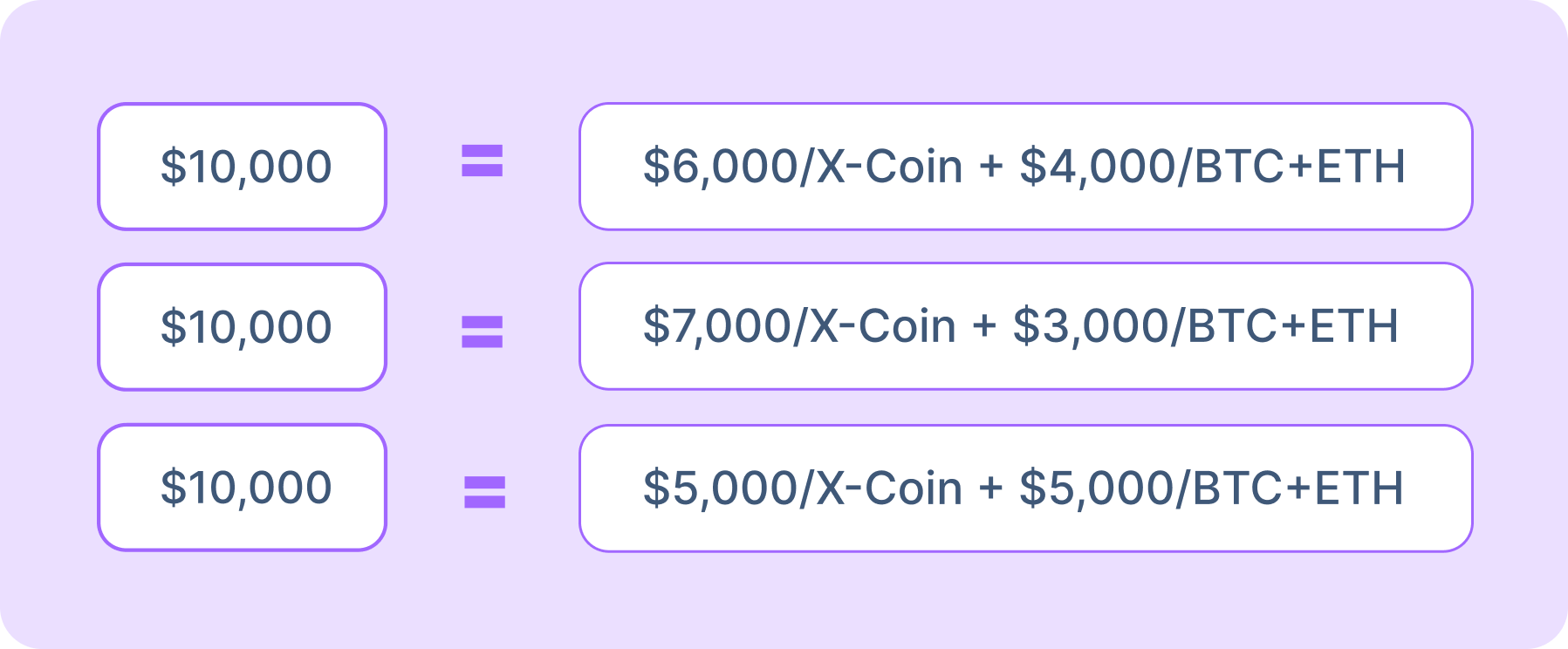Predator-Prey Strategy in Crypto Market
Key Insights
- The Predator-Prey strategy implies dividing the portfolio into high-risk and stable assets, striking a balance between potential high returns and overall risk reduction.
- Regularly evaluating and adjusting the portfolio in response to market conditions and changing goals is a key aspect of the strategy.
- This diversification strategy safeguards against substantial losses and leverages the growth potential of higher-risk assets.
What Is Predator-Prey Crypto Strategy
The Predator-Prey strategy is an investment approach that involves dividing a crypto portfolio into two parts: one high-risk high-reward (Predator) and more stable (Prey) assets. This crypto strategy allows investors to capitalize on crypto market volatility to generate profits while reducing overall risk through portfolio diversification.
Below are the Predator and Prey types of investment options explained.
Crypto Strategy: Predator
The Predator part of the crypto portfolio can include stocks, altcoins, startups, and other high-risk investments.
The goal of the Predator is to maximize profit and yield significant returns with rising prices. Investors can use fundamental and technical analysis, as well as crypto market news updates, to select assets for the Predator part. This may also involve researching the project team, technology, competitors, and more.
However, the Predator part is subject to significant price fluctuations, and investors must be prepared for potential losses.
Crypto Strategy: Prey
The Prey part of the portfolio consists of more stable and less risky assets, for instance, well-established cryptos like Bitcoin and Ethereum. It’s often used to protect the crypto portfolio from significant losses and crypto market volatility.
The goal of the Prey is to provide stability and minimize overall crypto portfolio risk. These assets sometimes act as a cushion in case of a sharp decline in the Predator market.
The Prey can also serve as a source of steady income, and investors can expect relatively stable returns on this part of the portfolio.
Crypto Portfolio Rebalancing
In Predator-Prey strategy, balance management is the process of reallocating funds between the Predator and Prey parts to maintain balance and achieve investment goals.
When to Reallocate Funds
- Changing Market Conditions
If there are market changes that could affect your investments, such as a significant drop in the Predator prices or increased volatility, it may require rebalancing.
- Changing Investment Goals
If your goals change, such as wanting to perform risk management or increase potential profits, you may need to reallocate funds.
- Regular Portfolio Rebalancing
Even in the absence of significant crypto market changes, investors may regularly review their crypto portfolio in case they want to adjust it to align with their new targets.
How to Reallocate Funds
- Market Conditions
The investor analyzes the current crypto market conditions and the performance of both the Predator and Prey parts of the cryptocurrency portfolio.
- Goal Setting
The investor establishes their goals and strategic priorities, including determining the desired percentage balance between the Predator and Prey in the cryptocurrency portfolio.
- Decision Making
Based on the assessment and goals, the investor decides how much of their money needs to be reallocated between the Predator and Prey parts.
- Execution
The investor reallocates their funds by buying or selling crypto assets.
- Monitoring and Evaluation
After the reallocation, the investor monitors the crypto market reaction to the changes and reevaluates the crypto strategy as needed.
Predator-Prey Crypto Strategy Implementation
Below is a hypothetical scenario of how to implement the Predator-Prey strategy in crypto market.

- Balance Setup
Suppose you have an initial crypto portfolio of $10,000. Following the Predator-Prey strategy, you decide to divide your portfolio as follows:
Predator is 60% of the cryptocurrency portfolio ($6,000) that you store in, say, the high-risk altcoin X-Coin, which, based on your research, has the potential for significant growth.
Prey is 40% of the crypto portfolio ($4,000) that you store in more stable BTC and ETH, allocating $2,000 to each.
- Correction
Over the next few months, X-Coin's price experiences a sharp increase due to investor attention and positive project news, while neither BTC nor ETH showed growth. Your investments in the Predator part have grown, and here’s how the current balance of the crypto portfolio now looks like.
Predator (X-Coin): 70% ($7,000)
Prey (BTC/ETH): 30% ($3,000)
- Assessment and Correction
Suddenly, a crypto market correction begins, and X-Coin's price starts to decline due to unexpected events. You decide that it's important to reallocate some of your funds to protect your profits.
Predator (X-Coin): 50% ($5,000)
Prey (BTC/ETH): 50% ($5,000)
- Regular Strategy Updates
You regularly monitor the crypto market and your portfolio's performance. If the situation changes, you adjust the balance between the Predator and Prey parts in line with your cryptocurrency portfolio. For instance, if the Predator market becomes more stable and predictable, you may decide to increase your weight there.
Summary
The Predator-Prey strategy is an investment approach that divides a crypto portfolio into high-risk high-reward and more stable assets allowing investors to leverage market volatility.
Balancing these crypto portfolio components is a key element of this strategy. Investors must be prepared for potential losses, but the crypto strategy provides an opportunity to strike a balance between risk and potential profit.
Users can get all the mentioned crypto assets on SimpleSwap.
The information in this article is not a piece of financial advice or any other advice of any kind. The reader should be aware of the risks involved in trading cryptocurrencies and make their own informed decisions. SimpleSwap is not responsible for any losses incurred due to such risks. For details, please see our Terms of Service.


